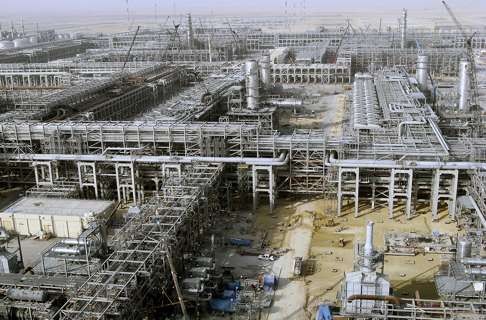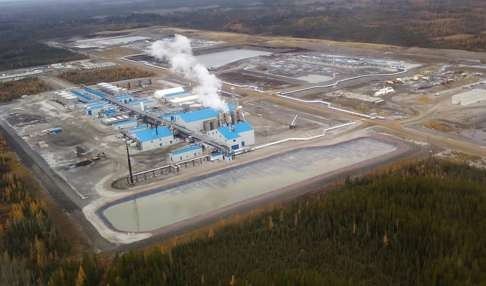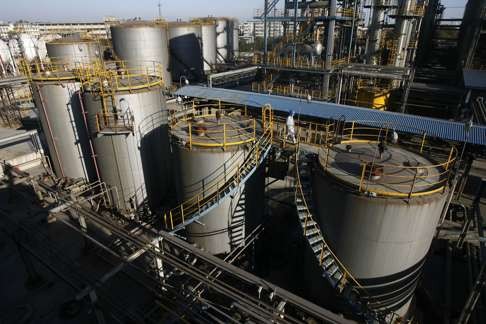
Sinopec Group believed to be considering stake in Saudi Aramco’s planned IPO
Saudi Arabia’s state-owned oil company is attractive for its low-cost oil fields, analysts say

The potential opportunity to become a strategic shareholder of Saudi Aramco via its planned initial public offering may open up opportunities for China Petrochemical Corp (Sinopec Group) to invest in low-cost oil production assets, which will help counter-balance the tens of billions of US dollars of high-cost overseas assets amassed by the firm in the past decade, analysts said.
The Saudi Arabian government is planning a three-way stock market listing for state-owned Saudi Aramco in London, New York and Hong Kong, British daily The Telegraph reported on Sunday, adding that the government hopes to attract companies including Sinopec Group, ExxonMobil and BP to take strategic stakes.

They may be offered “long-term access to upstream operations” in Saudi Arabia, in exchange for “cutting-edge technology or refinery deals,” unnamed “sources close to Saudi thinking” were quoted as saying in the report.
The IPO is estimated to be worth US$125 billion - five times that of the world’s largest IPO, Alibaba Group’s US$25 billion deal in 2014 - based on a valuation of the entire firm of US$2.5 trillion, the report said. Saudi Aramco is the world’s largest oil producer and proven reserve holder.
“Sinopec Group has wide-ranging cooperation with Saudi Aramco in the up, mid and downstream segments of the oil and gas industry,” a Sinopec Group spokesman said. “In regards to becoming a strategic investor in Saudi Aramco, we do not have any discloseable news at the moment.”
An email to Saudi Aramco seeking comments went unanswered. A London-based spokesman at JP Morgan, an adviser on the IPO, declined to comment.

Deputy Crown Prince Mohammed bin Salman was quoted by Bloomberg early last month saying that Saudi Arabia was planning an IPO to sell shares amounting to around 5 per cent of the company as soon as next year to raise funds to help reach its goal of breaking its economy’s majority dependance on oil within two decades.
Analysts said that Sinopec Group, the world’s second-largest oil refiner and petrochemicals producer, and the parent of listed China Petroleum & Chemical (Sinopec), could take advantage of the opportunity to balance its overseas portfolio mostly amassed when oil price exceeded US$80 a barrel, almost double recent levels.
Sinopec Groupspent more than US$40 billion in the past decade acquiring overseas assets. These include unconventional energy in Canada, such as the oilsands and shale gas projects, many of which require oil and gas prices much higher than current levels to be profitable.
“Assets like Sunshine Oilsands, Daylight Energy and Syncrude were bought when energy prices were very high, and much of them will not be able to enter into production at current prices,” said an oil and gas sector analyst with the Hong Kong arm of a mainland brokerage.
Sinopec Group in early 2012 bought US$150 million worth of shares in Hong Kong-listed, Alberta -based oilsands projects developer Sunshine Oilsands, whose maiden project failed to commercialise due to major cost overruns. Its 6.1 per cent stake in Sunshine Oilsands is now worth US$10.5 million.
Sinopec Group in late 2011 also spent C$2.2 billion (HK$13.19 billion) to buy Canada’s Daylight Energy, which owns shale gas projects under development in British Columbia and Alberta.
It also bought a 9.03 per cent in Syncrude, the world’s largest producer of oil from the Alberta oilsands for US$4.65 billion in 2010.

Sinopec Group owns the vast majority of the group’s overseas oil and gas exploration and production assets, with Hong Kong and Shanghai-listed Sinopec holding some production assets offshore Angola in West Africa.
“With the jumbo IPO planned by Saudi Aramco, it will need many strategic investors to make big purchases of its shares,” said another analyst with an American brokerage. “Sinopec’s interest as a mainly downstream player in this would be stakes in Saudi low production cost oil fields.”
However, he said terms such as taxation and royalties for foreign partners in Saudi Arabia’s oil projects are unclear and need to be negotiated.
Sinopec Group and Saudi Aramco already has a large-scale oil refinery joint venture in the country, which came on stream early last year.
Sinopec and fellow state-backed Chinese oil firms have much higher oil production costs compared to Middle East producers whose costs are at US$20 a barrel or below.
Sinopec requires crude oil to average this year US$60 a barrel for its oil production operation to break-even, compared to US$51 per barrel for PetroChina and US$45.6 per barrel for CNOOC, according to Sanford Bernstein senior analyst Neil Beveridge’s estimates.
Meanwhile, most member nations of the Saudi Arabia-led Organisation of the Petroleum Exporting Countries need the oil price to stay above US$90 a barrel to balance government budgets, raising pressure for them to cut output.
If Saudi Aramco is listed, it would out-size United States-based ExxonMobil, the world’s largest publicly traded international oil and gas firm, which has a market capitalisation of US$367 billion.